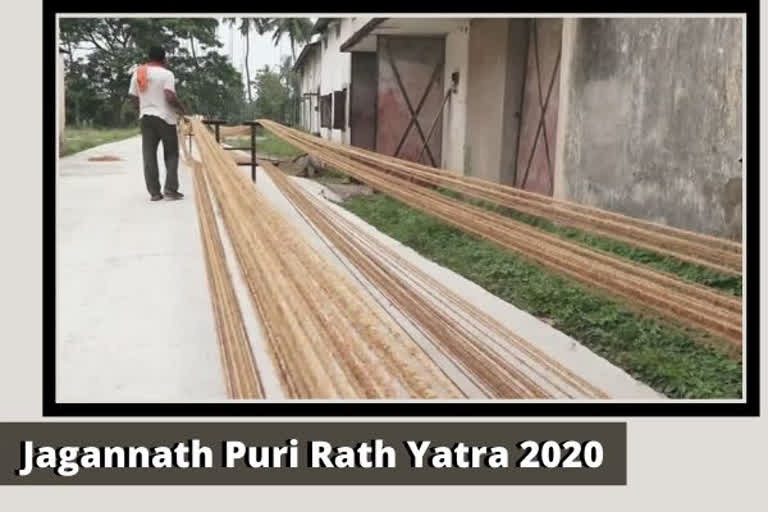Puri: As coronavirus cases are on the rise, devotees are still apprehensive whether Jagannath Puri Rath Yatra, the annual nine-day-long sojourn of Lord Jagannath and his siblings, will be held or not.
To mark the celebrations, the chariots of Lord Jagannath, Lord Balabhadra and Goddess Subhadra are pulled on the Grand Road from the Jagannath temple to Gundicha temple covering a distance of 2.5 km.
Ropes that are used to pull these glorious chariots are no ordinary ropes. It is believed that the mere touch of these ropes can make an individual sinless.
According to mythology, the ropes used are symbols of pious serpents. Ropes of Lord Balabhadra’s chariot Taladhwaja is regarded as the serpent King Basuki, Devi Subhadra’s Darpadalana as a female serpent Swarnachuda and Lord Jagannath’s Nandighosa is reckoned as female serpent Sankhachuda.
Talking to ETV Bharat, servitor Gouri Shankar Singhari said that, "Rope used in Lord Balabhadra’s chariot is 220 feet long and its circumference is of 8 inches. The rope is known as 'Basuki Nag'."
"It is believed that devotees who touch these ropes become sinless and they get liberated from the cycle of death and rebirth," said Singhari.
Singhari also revealed that believers from other religious backgrounds also participate in the celebration.
These ropes are made up of Coir or coconut fibre in the Sakhigopala temple in Sakhigopal village.
Servitor Dr Sarat Mohanty said, "After the yatra, devotees even take these ropes to their houses as they are considered sacred."
Sources said a total of 20 ropes were handed over to the temple administration for Rath Yatra. While 14 ropes will be used for chariot pulling, six ropes will be utilised for cordoning off the three chariots.
Jagannath Puri Rath Yatra said to be India's biggest chariot festival is set to commence from June 23 this year. In view of the COVID-19 pandemic, the public and devotees will not be allowed to participate and the Rath Yatra will be held only with the participation of servitors.



